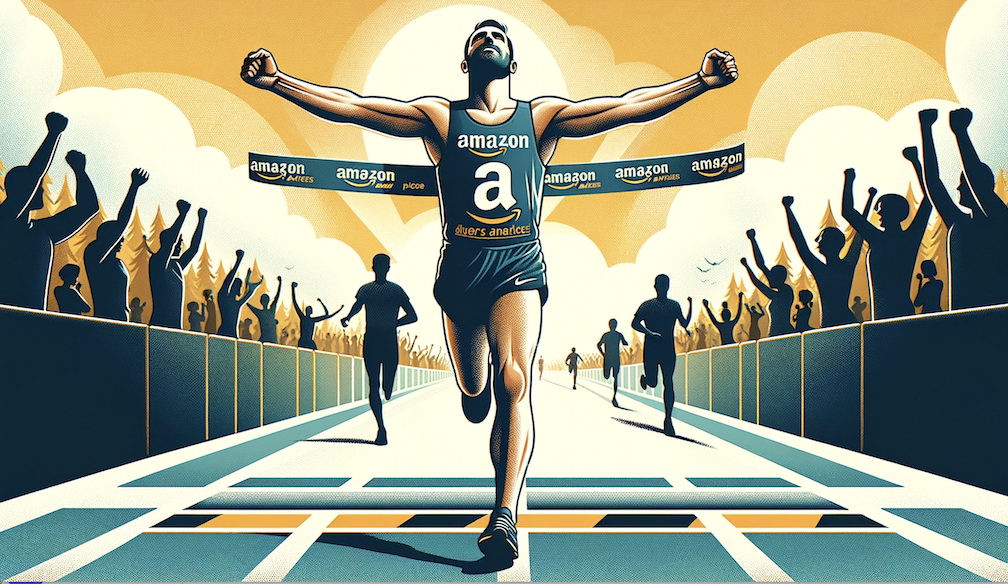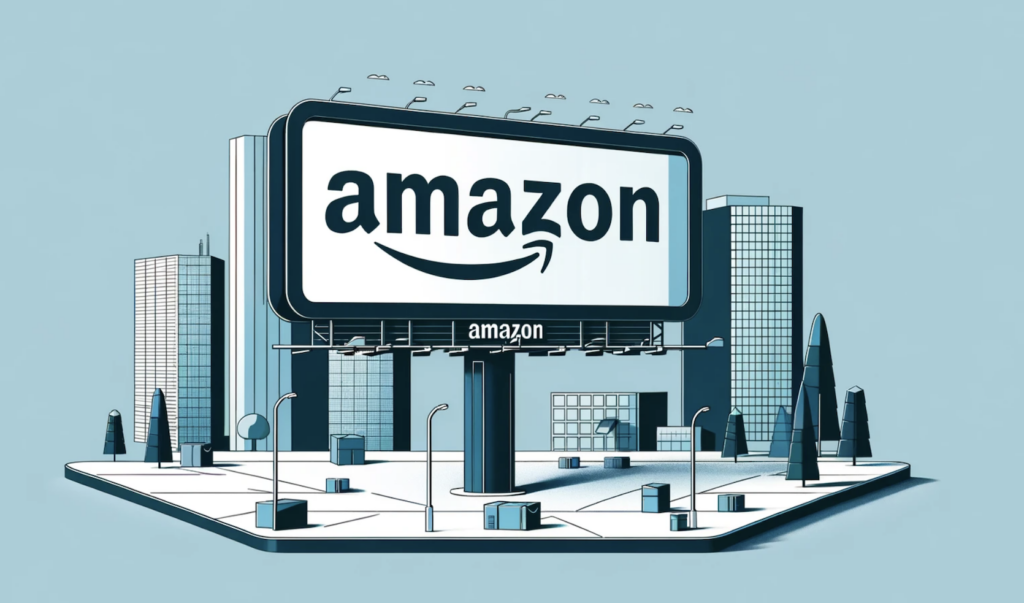The Ultimate Amazon SEO Quick Start Guide for 2025
AI-driven competition is here to stay. In this era of intelligent algorithms, it’s more important than ever to master your Amazon SEO!

In 2025, Amazon’s ecosystem has continued to be ground zero for online sales. When you add the revolution of artificial intelligence and external traffic prioritization, you end up with a scenario where entrepreneurs are racing to gain every competitive edge possible.
That’s why optimizing for Amazon SEO is more critical than ever.
This post focuses on strategies we use to help our partners get ahead of their competition, and details a comprehensive 12-step framework that covers everything you need to know about SEO in the age of Amazon’s evolved algorithm.
But first…
What is Amazon SEO?
Amazon search engine optimization (SEO) is the process of making carefully considered improvements to product listings to rank higher in product searches on Amazon.com within Amazon’s evolved algorithm framework.
A well-crafted Amazon SEO strategy helps you improve your Amazon listings for product search, boosts sales velocity, drives external traffic signals, and makes it easier for Amazon shoppers to find your listings and brand store.
Why Traditional Amazon SEO Approaches Are Failing
Amazon’s ecosystem continues to be packed with cookie-cutter courses offering outdated directions that promise to get ecommerce sellers onto Amazon’s first page using obsolete tactics.
Unfortunately, those traditional Amazon approaches lead to stagnant results in 2025’s competitive landscape where Amazon’s evolved search algorithm prioritizes different factors than previous systems.
There are many Amazon sellers doing a decent job with their ecommerce business using outdated methods. That leaves tremendous opportunity at the top for those partners who want to take their digital marketing to the strategic level and excel with cutting-edge optimization.
Based on our experience managing over $3.31 billion in partner revenue, we’ve identified the exact ranking factors that matter most in 2025’s evolved Amazon algorithm.
Understanding Amazon’s Evolved Search Algorithm: The Reality Behind A10
There is widespread discussion among Amazon seller communities and SEO experts about the existence of what many call the “A10 algorithm”—described as the successor to Amazon’s previous A9 search system.
According to numerous blog posts and ecommerce conversation throughout 2025, this evolved ranking framework places increased emphasis on factors like external traffic, seller authority, and organic engagement, alongside traditional ranking signals such as sales history and conversion rate.
However, it’s important to note that Amazon has never officially announced a search algorithm called “A10.” Some authoritative marketing sources and seller forums suggest “A10” is a term coined by the broader Amazon seller community to describe perceived changes in search ranking signals rather than an officially named Amazon system.
For the purposes of this article, we’ll continue to refer to Amazon’s algorithm as A9.
Ready to Start Growing Your Amazon Brand?
Canopy’s Partners Achieve an Average 84% Profit Increase!
Find out moreThe Real Ranking Evolution That Matters
Regardless of naming conventions, the behaviors and ranking factors attributed to the newest version of Amazon’s A9 reflect genuine trends regarding how Amazon prioritizes product listings. Here’s what the Canopy team thinks has been behind these critical ranking shifts:
External Traffic Quality – The most significant ranking factor in 2025 is your ability to drive high-quality external traffic that converts on Amazon. Partners who successfully bring qualified visitors from Google, social media, and influencer partnerships see dramatic ranking improvements.
Organic Engagement Prioritization – Amazon’s evolved algorithm has shifted to prioritize organic engagement and external traffic over paid advertising performance. This means sustainable SEO success requires building genuine customer connections beyond PPC campaigns.
Enhanced Seller Authority Metrics – Seller authority and reputation now carry increased influence on visibility, with strong feedback scores, low order defect rates (ODR), and excellent customer service becoming more important than ever.
AI-Powered Contextual Understanding – The search system now emphasizes context and user intent over simple keyword matching, representing a fundamental shift from keyword-based ranking to intelligent, contextual understanding.
Personalization Through Machine Learning – Amazon increasingly uses AI and machine learning to personalize results based on individual shopping patterns, purchase history, and browsing behavior.
How We Help Partners Navigate Amazon’s Evolved Algorithm
At Canopy Management, our team of former Amazonians and industry experts has developed proprietary systems that align perfectly with these evolved ranking priorities. Our human-led, software-driven approach focuses on building sustainable organic visibility rather than relying solely on paid advertising tactics.
This strategic methodology is why our partners achieve an 84% average year-over-year profit increase while building a resilient, long-term marketplace presence that adapts to Amazon’s continuing algorithm evolution.
How to Get Your Product Found on Amazon in 2025
Amazon shoppers conduct product searches by typing terms or phrases (keywords) into the search box. Then, Amazon’s evolved algorithm analyzes multiple signals—including external traffic patterns, conversion quality, and seller authority—to deliver the most relevant organic search results.
At that point, shoppers can explore individual listings or continue searching using additional descriptive keywords.
That’s where strategic Amazon listing optimization becomes crucial for marketplace success.
In today’s digital marketplace, Amazon listing optimization has become pivotal for sellers aiming to capture larger market share and ensure their ASINs are prominently showcased in their product categories.
At the heart of this process are optimized Amazon product listings that work within Amazon’s evolved ranking framework.

The Complete 12-Step Amazon SEO Framework for 2025
Step 1 – Strategic Keyword Research for Amazon’s Evolved Algorithm
Effective SEO strategy begins with comprehensive Amazon keyword research that aligns with Amazon’s contextual understanding capabilities.
Keywords (also known as “SEO keywords,” “keyphrases,” “search terms,” or “search queries”) are words and phrases users type into search engines to find information on particular topics. They serve as the foundation for Amazon’s search results within the evolved algorithm system.
Front-facing keywords appear in product titles, descriptions, and bullet points. These keywords are most likely to bring your product to your target audience’s attention through search results.
Backend keywords aren’t visible to prospective buyers, but they provide crucial indexing signals to Amazon’s algorithm. The backend is an excellent place to include foreign language translations, synonyms, and long-tail variations of your primary keywords.
Four Prime Opportunities for Strategic Keyword Optimization:
- Backend Search Terms (expanded 2500-character capacity)
- Product Title (maximum impact zone)
- Key Product Features (bullet points)
- Product Description (detailed context)
Ready to Start Growing Your Amazon Brand?
Canopy’s Partners Achieve an Average 84% Profit Increase!
Find out moreStep 2 – High-Quality Amazon Product Images That Stop the Scroll
After users search on Amazon, the first element they notice are product images.
High-quality images enable customers to quickly decide if a product warrants closer examination. They’re a significant factor in why Amazon shoppers actually read titles, bullet points, and descriptions.
2025 Amazon Image Guidelines:
- Six images plus video is optimal for maximum engagement
- Images should be clear, informative, and attention-grabbing
- White background images should fill at least 85% of image space
- Use 1000 x 1000 pixels minimum to increase listing quality
- Show the complete product customers will receive
- Include only what’s in the actual purchase
Canopy Pro Tip: Ensure your images include lifestyle shots, infographics, and video content. This approach helps stop the scroll while eliminating the majority of returns and customer service issues. Take full advantage of Amazon A+ Content featuring ultra-high-quality images.
Amazon’s native AI-powered image “generator” leverages generative artificial intelligence to deliver lifestyle and brand-themed images based on product details in seconds, helping level the field for smaller sellers.

Step 3 – Crafting Product Titles That Form the Right First Impression
It takes only 5-10 seconds after encountering someone new to form a first impression. The same principle applies to your product title.
While Amazon allows up to 200 characters maximum, only the first 5-10 words in your product title appear as a search result, making these opening words the most important copy for your listing.
Strategic Title Optimization for Amazon’s Evolved Algorithm:
- Amazon now enforces a maximum of 200 characters, down from previous 500-character limits, due to keyword stuffing misuse
- Amazon advises titles be kept between 80-100 characters to improve readability and avoid keyword stuffing
- Your title should match what appears on the physical product package
- Make your title clear and compelling, but keep it concise
Canopy Pro Tip: Remember, Amazon shoppers using smartphones see truncated titles. Place your main keywords at the very front of your titles. Include three to four of your top keywords while avoiding keyword stuffing. Always include your brand name for recognition and trust-building.
Step 4 – Bullet Points That Tell Your Strategic Brand Story
Trying to fit your entire product description and targeted keywords into the tight 200-character product title creates challenges. With a 1000-character limit, Amazon’s product features section provides expanded space to help Amazon shoppers appreciate your product’s unique features.
A strong list of key features starts each point with a key benefit that directly appeals to what your customers need.
Canopy Pro Tip: Lead each bullet point with bolded and/or capitalized summarization. This makes it easier for the large numbers of customers who prefer to quickly skim listings. Include most of your medium and high search volume long-tail keywords in bullet point copy. Expand on your product’s features by putting yourself in the shopper’s position and anticipating questions they might have.
Use customer reviews for similar products to identify questions prospective customers have had. This gives you clearer ideas about product features they valued, allowing you to highlight similar features in your own listings.
Step 5 – Product Descriptions That Reduce Returns and Build Trust
Your product description section should expand on key product features and benefits. Use this area to include long-tail keywords identified in your keyword research.
Amazon allows 2,000 characters to describe your product and explain its function and uses.
Strategic Description Best Practices:
Do:
- Strategically incorporate relevant keywords naturally into copy
- Create detailed buyer personas considering your ideal customer and their needs
- Highlight differentiators between your product and competitors
- Tell compelling stories that contextualize your product in customers’ lives
Don’t:
- Stuff listings with keywords (remember, you’re selling to humans, not algorithms)
- Follow generic approaches (focus on what makes your product special)

Step 6 – Maximizing Backend Search Terms: The 2500-Character Advantage
Amazon has made a significant change that could have a profound impact on product discoverability and search ranking. The character limit for backend search terms has been expanded from 249 bytes to 2500 characters, spread across five fields of 500 characters each.
Strategic Backend Optimization Framework:
You can have a total of 2500 characters of backend search terms by clicking “Add More” to access up to four additional lines of keywords.
2025 Amazon Backend Guidelines:
- Distribute keywords across five 500-character fields strategically
- Use synonyms and spelling variations effectively
- Include abbreviations and alternate product names
- Use lowercase letters throughout
- Avoid punctuation marks like semicolons, colons, and hyphens
- Separate words with spaces only
- Avoid repetitions of frontend keywords
- Skip articles, prepositions, and short filler words
- Use either singular or plural forms (not both)
Advanced Backend Strategy:
- Field 1: Primary keywords and core terms
- Field 2: Synonyms and variations
- Field 3: Long-tail keyword phrases
- Field 4: International/multilingual terms
- Field 5: Seasonal and contextual keywords
Step 7 – Competitive Pricing Strategy for Algorithmic Success
Because shoppers navigate to Amazon’s marketplace expecting competitive prices, researching competition and making strategic adjustments to arrive at optimal price points becomes crucial for niche success.
Amazon prioritizes customer experience, which means pricing significantly influences conversion rates and overall sales growth within the A9 algorithm framework.
Amazon’s Evolved Algorithm Pricing Considerations:
External traffic converts better with competitive pricing strategies
- Conversion rate optimization directly impacts organic rankings
- Competitive pricing signals quality to Amazon’s algorithm
- Price changes should align with inventory and demand patterns

Step 8 – Amazon PPC Advertising: The Strategic Integration
Amazon Pay-Per-Click (PPC) advertising serves as a powerful tool for enhancing Amazon SEO strategy, but its role has evolved significantly within Amazon’s modern ranking system.
While organic sales have a stronger impact on rankings than PPC, paid ads alone are no longer enough to improve ranking. The evolved system prioritizes organic engagement patterns over pure advertising spend.
Strategic PPC Integration:
- Use PPC to identify high-converting keywords for organic optimization
- Drive initial traffic to new listings while building organic momentum
- Test keyword performance before investing in organic optimization
- Support external traffic campaigns with targeted Amazon advertising
This integrated approach has become essential for launching products and maintaining visibility while building sustainable organic rankings.

Step 9 – Sales Velocity: The Performance Foundation
Sales performance plays a pivotal role in Amazon’s evolved SEO strategy, directly influencing product visibility and ranking in search results. However, the algorithm now weighs conversion quality over pure sales volume.
Amazon’s evolved system places more emphasis on a product’s ability to convert clicks into sales. A product that consistently converts, even with lower overall sales, is likely to see a ranking boost.
Sales Velocity Optimization for Amazon’s Evolved Algorithm:
- Optimize for customer lifetime value, not just initial purchases
- Focus on conversion rate improvement over transaction volume
- Build sustainable sales patterns through external traffic
- Maintain consistent inventory levels to avoid ranking disruptions

Step 10 – Visual Search Optimization: The 2025 Breakthrough
Visual search uses image recognition technology to allow users to search for information or products using photos instead of words, with Google Lens allowing billions of visual searches per month, 20% of which are related to shopping.
Visual Search Optimization Strategies:
Image Technical Optimization:
- Use descriptive, keyword-rich file names
- Implement comprehensive alt text for all product images
- Ensure high-resolution images that load quickly on mobile devices
- Include multiple angles and lifestyle context shots
Structured Data Integration:
- Implement product schema markup for enhanced discoverability
- Use JSON-LD structured data for product information
- Include detailed product specifications in markup
- Add review and rating schema for social proof signals
Mobile-First Visual Approach: Visual searches are increasingly conducted on mobile devices, so ensure your website’s design is responsive and images load quickly on all devices.
Step 11 – Voice Search Integration: Conversational Commerce
75% of local searches are expected to happen via voice by 2025, with the voice commerce market projected to reach $151.39 billion in 2025.
Voice Search Optimization Framework:
Natural Language Integration:
- Use conversational phrases in titles and bullet points
- Include long-tail keywords that mirror real spoken searches
- Write descriptions addressing specific use cases and questions
- Structure content for easy AI parsing and summarization
Featured Snippet Optimization: Voice assistants often provide “position zero” results, or featured snippets, in response to searches. Organize your content using bullet points, numbered lists, and clear headings so that it answers questions immediately.
Local and Mobile Integration:
- Optimize for “near me” and location-based voice queries
- Ensure mobile-responsive design for voice search users
- Include local business schema markup where applicable
Step 12 – A+ Content and Brand Story Optimization
Advanced A+ Content Modules for 2025:
Storytelling Modules:
- Brand story sections with compelling narrative elements
- Comparison charts highlighting competitive advantages
- Mobile-optimized graphics that load quickly across devices
Alt Text Strategy for A+ Content: Even though A+ Content alt text isn’t directly indexed for search, optimized descriptions improve accessibility and user experience, contributing to longer page engagement times that Amazon’s evolved algorithm values.
Image Optimization Best Practices:
- Use high-resolution images optimized for fast loading
- Include keyword-relevant alt text for accessibility
- Structure content for easy scanning and mobile consumption
- Test different module combinations for optimal engagement
Ready to Start Growing Your Amazon Brand?
Canopy’s Partners Achieve an Average 84% Profit Increase!
Find out moreCustomer Reviews and Q&A: Your Natural Language Goldmine
Systematic Review Mining for Keyword Discovery:
Our partners use customer reviews and Q&A sections as rich sources of natural language keywords that real customers use when searching for products.
Strategic Review Analysis Process:
- Identify Common Language Patterns: Analyze how customers describe your product’s benefits and use cases
- Extract Long-Tail Keywords: Find specific phrases customers use that you might not have considered
- Uncover Pain Points: Identify problems your product solves that you can address in optimization
- Build FAQ Content: Use common questions to create content that ranks for voice search queries
Review Content Impact on Rankings: Review content now impacts both SEO and conversions, as Amazon’s search algorithm uses backend keywords to determine the relevance of your listings to search queries. Positive review content reinforces your keyword strategy and provides social proof signals that Amazon’s evolved algorithm values.
Ready to Start Growing Your Amazon Brand?
Canopy’s Partners Achieve an Average 84% Profit Increase!
Find out moreFAQ Section: Strategic Amazon SEO for 2025
Q: How has Amazon’s evolved algorithm changed Amazon SEO optimization?
Amazon’s evolved algorithm fundamentally transformed Amazon search by prioritizing external traffic quality, organic engagement patterns, and seller authority over pure sales velocity. External traffic matters more – Amazon rewards products that bring in traffic from Google, social media, and influencers.
Q: What’s the current backend search terms character limit?
The character limit for backend search terms has been expanded from 249 bytes to 2500 characters, spread across five fields of 500 characters each. This represents a massive opportunity for strategic keyword expansion.
Q: Should I focus on voice search optimization?
Absolutely. 75% of local searches are expected to happen via voice by 2025, making voice optimization essential for long-term success. Focus on conversational keywords and natural language patterns.
Q: How important is external traffic for Amazon rankings?
The most significant ranking factor in 2025 is your ability to drive high-quality external traffic that converts on Amazon. Building external traffic sources has become more important than internal PPC campaigns for sustainable rankings.
Q: What’s the ideal product title length for Amazon’s evolved algorithm?
Amazon now enforces a maximum of 200 characters, with Amazon advising titles be kept between 80-100 characters to improve readability and avoid keyword stuffing. Front-load your most important keywords in the first 5-10 words.
Ready to Dominate Amazon with Strategic SEO?
Understanding Amazon’s evolved algorithm requires sophisticated integration of external traffic strategies, contextual optimization, and real-time adaptation that goes far beyond traditional seller knowledge.
The platform’s evolution toward contextual search, external traffic prioritization, and AI-powered decision-making demands specialized expertise and cutting-edge tools that most sellers simply don’t possess.
That’s why successful brands partner with Canopy Management.
Our team of former Amazonians, multi-million dollar sellers, and award-winning experts leverage advanced systems and real-time algorithmic insights to optimize for the factors that matter most in 2025’s marketplace.
When you work with Canopy Management, you gain access to:
- Algorithm-optimized strategies that build sustainable organic rankings across all channels
- External traffic development that drives qualified visitors from Google, social media, and influencer partnerships directly to your Amazon listings
- Advanced keyword research utilizing our proprietary tools and 2500-character backend optimization
- Voice and visual search integration that captures emerging search behaviors
- Human-led, software-driven approach that outperforms AI-only optimization services
Our partners achieve an average 84% year-over-year profit increase because we don’t just optimize for today’s algorithm – we build strategic foundations that adapt as Amazon continues evolving.
Ready to transform your Amazon SEO strategy?
Let’s discuss how our proven methodology can accelerate your growth in 2025’s competitive marketplace. Our Custom Brand Plan™ approach ensures your optimization strategy aligns perfectly with your specific business goals and product categories.
Canopy Management is a full-service marketing agency for Amazon, Walmart, and TikTok sellers. Our team consists of multi-million dollar, omni-channel entrepreneurs, industry leaders, and award-winning experts.
Contact us today to discover why selling on Amazon is much easier “under the Canopy.”
Ready to Start Growing Your Amazon Brand?
Canopy’s Partners Achieve an Average 84% Profit Increase!
Find out more

